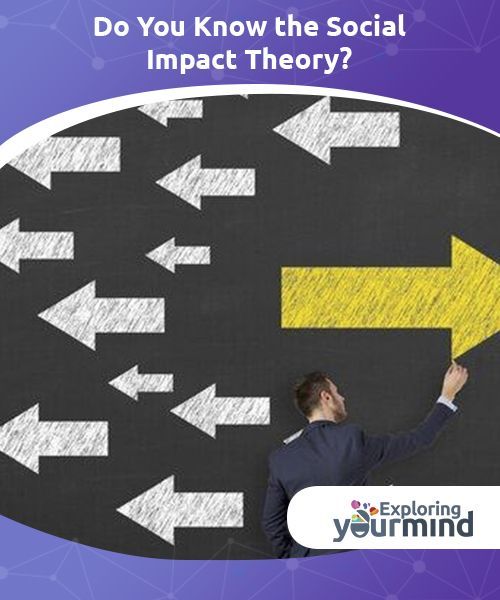Social impact theory attempts to evaluate how individuals can be sources or objects of social influence. Social impact includes any influence on people’s feelings, thoughts, or behavior. Therefore, social impact theory is useful for understanding which social situations have the greatest influence on us.
Thus, the social impact will depend on the social forces, which are the causes that cause changes in the immediacy of the event and the number of sources that cause the impact. The application of social impact varies from the extension of responsibility to social recreation, nervousness or persuasive communication.
- The value or part of the value of relationships is based on costs and rewards.
- While costs subtract points from a relationship.
- Rewards add up.
- On the one hand.
- Rewards provide a pleasure or satisfaction that people appreciate.
- While costs include any factors that impede behavior.
For example, imagine that we are studying for an exam that we will have tomorrow, then we are called by a friend and we miss all afternoon talking on the phone, the call will cost us dearly because it prevents us from taking action: studying. In this case, that relationship would be negative, we were influenced, which had a social impact on us.
The theory of social impact can be explained by three factors, which are:
All three factors result in three laws of social impact. The first law is that of social forces, this law states that the social impact is based on the three factors of the previous section, increasing one of the three factors would significantly increase the social impact; on the other hand, zero or very low value would mean that there would be virtually no social impact.
The second law is psychosocial. According to this law, the greatest social impact occurs when a single source appears, that is, when there is no source and suddenly one appears, however, the emergence of more sources, as there already is, will have less and less impact. In a studio, several people were standing in the street, stunned in the sky. The results showed that more people looking up to heaven aroused more curiosity and that change became increasingly insignificant as more people were present.
The third and final law is the multiplication and division of impact, according to the Law, strength, urgency and number of objectives play a role in social impact, that is, the more strength and immediacy there will be and the greater the number of goals in a social situation, the more the social impact will be shared and among all the objectives. This law is at the root of phenomena such as the extent of responsibility, in which people feel less responsible as the number of people present increases.
The rules that guide social impact theory describe people as beneficiaries who passively accept social impact and ignore the social impact that people can actively seek; the model is also static and does not fully compensate for the dynamics involved in social interactions. to solve these dark spots arises the theory of dynamic social impact.
According to this theory, social influence is determined by force, immediacy and the number of sources present, as in the previous theory, but here groups are complex systems that constantly change and are never static, groups are reorganized into four basic models: consolidation, consolidation, correlation and continuous diversity. These standards allow group dynamics to work and disseminate ideas throughout the group.
These theories help us understand the influence that other people or groups can have, the social impact of sources affects us on a daily basis, but now we can measure this effect, we can know which factors will affect us the most and, of course, how to avoid the social impact.

